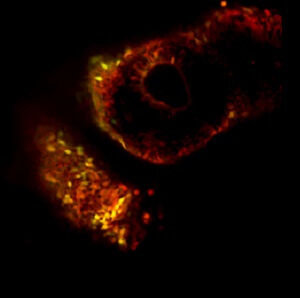The achievement may, among other things, pave the way for the production of organs for transplantation

One of the main obstacles on the way to the use of human embryonic stem cells for medical purposes is precisely related to the promise that lies in them: their ability to quickly differentiate into all existing cell types. Scientists have made many efforts to preserve embryonic stem cells in their initial, all-powerful state, but so far have been unsuccessful. The alternative to using embryonic stem cells - the production of induced stem cells (iPS) through the "reprogramming" of adult cells - suffers from the same limitation. Although they can differentiate into many types of cells, the induced stem cells already carry "buds of commitment" to a particular differentiation pathway. A team of scientists from the Weizmann Institute of Science recently took a significant step towards removing the obstacle. They created completely "neutral" human induced stem cells, that is, those in the earliest stage of differentiation, and kept them in this state for a long time. The achievement may, among other things, pave the way for the production of organs for transplantation. The research findings are published today in the journal Nature.
Since they were first successfully produced, in 2006, induced stem cells have been an ethical and useful substitute for embryonic stem cells. The "reprogramming" is done by inserting four genes into mature cells - like, for example, skin cells. Following this, a sort of "developmental journey backwards" takes place in the cells until they reach almost - but not exactly - the state of an embryonic stem cell. Dr. Yaakov Hana, from the Department of Molecular Genetics, and members of his research group, research students Ohad Gafni and Lehi Weinberger, together with scientists from the National Center for Personalized Medicine at the Weizmann Institute of Science, realized that inserting the same four genes is not enough to "reset" the cells; Their tendency to differentiate quickly must also be stopped.
A hint that it is possible to stop the differentiation is found in the fact that the embryonic stem cells derived from mice, which are used in many laboratory experiments, maintain their "neutral" state, and they do not suffer from the limitations that exist in human embryonic stem cells. Dr. Hanna and the members of his group realized that if they could decipher how the embryonic stem cells of the mouse manage to avoid differentiation, they would be able to apply the method to human cells. Through a combination of laboratory experiments and genetic analysis, they created a special treatment for induced human stem cells in vitro, which stops their differentiation.
Later, the scientists injected these cells into a blastocyte - a primary embryo made of a cluster of individual cells - of a mouse. If the induced human stem cells they created are indeed completely neutral, and can survive and divide, they will develop together with the mouse cells. The induced stem cells were labeled with a fluorescent dye, which allowed the scientists to follow them inside the developing mouse embryo. A test done after ten days did show that there are tissues derived from the mouse cells, alongside tissues derived from the induced human stem cells.
Dr. Hanna: "The cells we created correspond to the earliest state of human embryonic stem cells ever seen. We managed to 'freeze' a process that is very dynamic by nature, and produce a new type of induced stem cells that are completely neutral, and therefore may differentiate into any cell type." These findings may have many uses in biomedical research, and in particular in the field of genetic therapy and genetic engineering. Dr. Hanna and his team members plan to continue researching the mixed embryos they created, in order to use them to discover methods that will direct the development of human tissues so that functioning organs are formed.
A video showing the integration of neutral induced human stem cells, produced by Dr. Hana's method (in green and yellow) into the tissues of a mouse embryo (in red)
